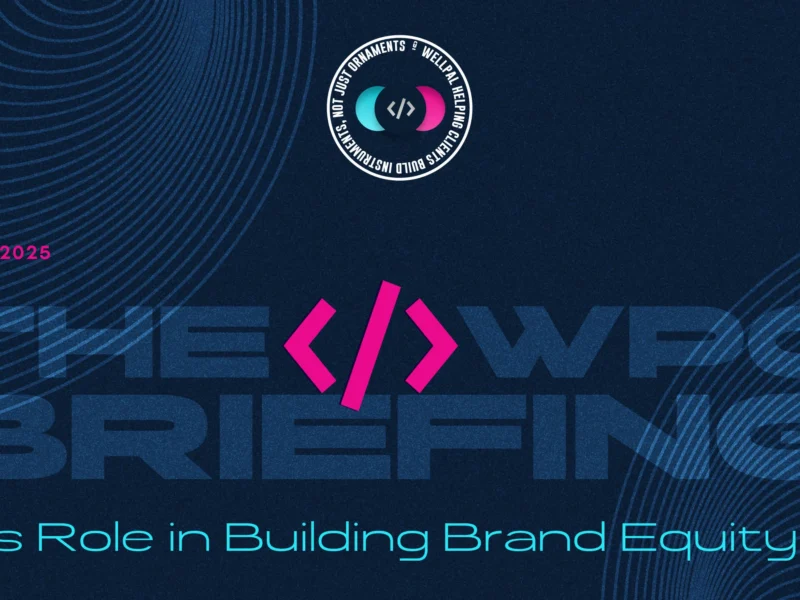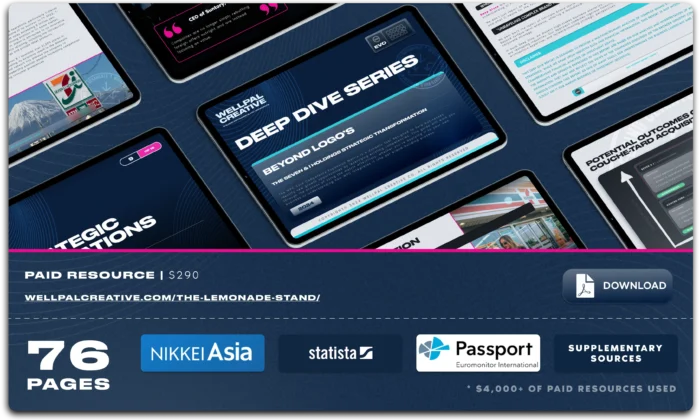COPYRIGHT © 2025 WELLPAL CREATIVE


“Build Instruments. Not Ornaments”
Featured
-
WellPal JTBD Kit
$0.00 -
DIY Series - The MVB Kit
$25.00
Recent Lemon Seeds
Copyright © 2025 WellPal Creative
AI From Hype to Hallucination
Discover how AI is transforming branding, strategy, and business across industries.

How AI is transforming branding, strategy, and business
The case.
Artificial Intelligence (AI) is transforming branding, strategy, and business, and is no longer just a buzzword—it’s a force that’s rapidly reshaping industries worldwide. From generating personalized marketing campaigns to automating complex data analysis, AI has become indispensable for entrepreneurs, brand strategists, and consumers alike. But like any powerful tool, it comes with its own set of challenges—hallucinations, data inaccuracies, and over-reliance being just a few.
So where does this leave us? How should entrepreneurs and brands navigate this evolving landscape without getting swept up in the hype or bogged down by faulty outputs?
Let’s dive into some of the key aspects.
Disclaimer: Readers are advised to consider this information in conjunction with their own research and to verify any critical data points before making business decisions. These industry are dynamic, and actual results may differ materially from the projections and analysis presented here. Or reach out for more in-depth and tailored made research on the topic for your business. Entrepreneurs & Businesses
AI as Your New Co-Founder (But Don’t Let It Run the Show)
For entrepreneurs, AI offers unprecedented opportunities to scale faster and smarter. Predictive analytics can help anticipate market trends before they emerge. Machine learning algorithms can sift through mountains of data to pinpoint exactly what customers want—even before they know it themselves.
But here’s the catch: AI is only as good as the data it’s fed. If you’re relying on AI without grounding it in solid business fundamentals (like feasibility, desirability, and viability), you’re setting yourself up for failure. Hallucinations—when AI generates plausible-sounding but incorrect information—can lead to bad decisions if not caught early.
How AI Challenges Smaller Retailers and SMEs
A General and China-Specific Perspective
The rapid adoption of AI by larger companies like Meituan in China highlights both the opportunities and challenges that artificial intelligence presents for smaller retailers and SMEs (small and medium-sized enterprises), as well as the effect it has on their employees when too much dependence is created on these technologies and legislation doesn’t evolve at the same rapid speed.
While AI offers tools to scale faster, optimize operations, and deliver hyper-personalized customer experiences, it also creates a widening gap between businesses with the resources to implement these technologies and those without.
This disparity is particularly pronounced in markets like China, where ambitious national strategies like Vision 2035 aim to integrate advanced technologies into every aspect of the economy.
A. General Challenges for SMEs in Adopting AI
Limited Capital for Investment
AI systems require significant upfront costs for infrastructure, software, and talent acquisition.
Smaller businesses often lack the financial resources to:
- Purchase or license advanced AI tools.
- Hire data scientists or consultants to implement and manage these systems.
- Maintain ongoing costs for cloud computing and data storage.
Lack of Data Infrastructure
AI thrives on large datasets, but many SMEs don’t have the volume or quality of data required to train machine learning models effectively.
Without sufficient historical data or robust data pipelines:
- Predictions generated by AI can be inaccurate or irrelevant.
- Smaller businesses may struggle to compete with larger firms that have access to vast consumer datasets.
Technology Knowledge Gap
Many SMEs lack the technical expertise needed to evaluate, implement, and manage AI solutions.
This knowledge gap can lead to:
- Over-reliance on off-the-shelf solutions that may not align with their specific needs.
- Mismanagement of AI tools, resulting in inefficiencies or errors (e.g., hallucinations in predictive analytics).
Survival Risks in an AI-Dominated Market
When larger competitors use AI to optimize pricing, personalize marketing, and streamline logistics, smaller retailers face increased pressure:
- Consumers may gravitate toward larger players offering lower prices or faster delivery.
- SMEs risk being left behind in industries where AI-driven efficiency becomes the norm.
B. China-Specific Challenges: The Vision 2035 Context
China’s Vision 2035 and the 14th five-year plan, aim to position the country as a global leader in technology-driven innovation. While this strategy emphasizes industrial efficiency and smart city development, it also risks exacerbating inequalities between large enterprises and smaller businesses. This to some extent will be a similar phenomenon in many developing countries.
Focus on Large Enterprises
China’s Vision 2035 prioritizes large-scale industrial applications of AI, such as:
- Smart manufacturing.
- Urban logistics optimization.
- National supply chain transparency (e.g., Bright Dairy’s blockchain integration).
While these initiatives drive economic growth at scale, they often leave smaller businesses behind due to:
- Limited access to government subsidies or incentives targeting high-tech industries.
- A focus on centralized platforms (e.g., Alibaba Cloud) that cater primarily to large corporations.
Data Centralization Challenges
China’s centralized approach to data collection benefits tech giants like Alibaba, Tencent, and JD.com. These companies dominate consumer datasets through their ecosystems of e-commerce platforms, payment systems (e.g., Alipay), and logistics networks.
Smaller retailers operating independently face challenges such as:
- Lack of access to shared data pools needed for effective AI implementation.
- Dependence on larger platforms for visibility and analytics tools—often at high costs.
Digital Divide Between Urban and Rural SMEs
China’s Vision 2035 includes plans for developing megacities like Chongqing-Chengdu as hubs for technological innovation.
However:
- Urban SMEs may benefit from proximity to tech ecosystems and government initiatives.
- Rural SMEs often lack the infrastructure (e.g., high-speed internet) needed to adopt AI solutions, further widening the gap between urban and rural enterprises.
C. Opportunities for SMEs
While challenges abound, there are opportunities for SMEs—both globally and in China—to leverage simplified or shared AI solutions:
Collaborative Platforms
Platforms like Alibaba Cloud, OpenAI, etc offer scalable services tailored for smaller businesses:
- Pre-built machine learning models (e.g., customer segmentation) reduce technical barriers.
- Pay-as-you-go pricing models make advanced tools more accessible.
Niche Markets
SMEs can focus on niche markets where personalization is less dependent on large datasets:
- Localized products or services tailored to specific communities.
- Emphasis on human-centric experiences that complement digital interactions.
Government Support Programs
In China, initiatives under Vision 2035 include efforts to digitize rural economies:
- Subsidies for adopting basic automation tools in agriculture or retail.
- Training programs aimed at equipping small business owners with digital skills.
D. The Survival Dilemma: Can SMEs Compete?
General Implications
For smaller retailers globally:
- Cost Pressures: Competing with larger players who use AI for dynamic pricing can erode profit margins.
- Customer Expectations: As consumers become accustomed to personalized experiences from AI-driven platforms like Amazon or Meituan, smaller retailers struggle to meet these expectations without similar tools.
- Operational Inefficiencies: Without access to predictive analytics or supply chain optimization tools, SMEs face higher costs and slower delivery times.
China-Specific Implications
In China’s competitive retail environment:
- Platform Dependency: Many small retailers rely on platforms like Taobao, Meituan, or JD.com for visibility but face high commission fees that cut into profits.
- Government Policies Favoring Scale: Policies under Vision 2035 focus on scaling industries rather than supporting grassroots innovation among SMEs.
- Risk of Consolidation: As larger companies consolidate their dominance through AI-driven efficiencies, smaller players risk being absorbed into larger ecosystems or pushed out entirely.
WPC Take-away
The integration of AI into retail and other sectors presents both opportunities and risks for SMEs. While larger companies leverage AI at scale to dominate markets, smaller businesses must navigate limited resources and knowledge gaps.
For SMEs globally—and especially in China—the key lies in adopting affordable, scalable solutions while focusing on niche markets where human connections still hold value. Governments and tech providers must also play a role by democratizing access to AI tools through subsidies, training programs, and shared platforms.
By addressing these challenges proactively, smaller retailers can carve out a competitive edge even in an increasingly AI-driven economy.
exercise 1
Key takeaways for brands
Use AI as an augmentation tool, not a replacement for your expertise. It can be your “brain extension,” but you still need to be the brains behind the operation.
Brands
Personalization at Scale—But at What Cost?
AI has revolutionized branding by enabling hyper-personalization at scale. Whether it’s Netflix recommending your next binge-watch or Nike using augmented reality to suggest the perfect shoe fit, brands are leveraging AI to create experiences that feel tailor-made for each individual consumer.
However, personalization comes with its own risks. As brands increasingly rely on AI-generated insights to shape their messaging and product offerings, there’s a danger of losing sight of the bigger picture—your brand’s core identity. When every interaction is personalized to the point of fragmentation, brands risk diluting their message or alienating customers who don’t fit neatly into algorithmic categories.
Example
In Europe, companies like Zalando have embraced AI-driven personalization in fashion retail to improve customer engagement and drive sales. Tools like the Algorithmic Fashion Companion (AFC) and ChatGPT-powered assistants provide tailored outfit recommendations based on browsing history, purchase patterns, and customer preferences.
However, challenges remain—such as balancing hyper-personalization with maintaining a cohesive brand narrative. For instance, while personalized recommendations can increase basket sizes by 40%, they may inadvertently dilute broader brand messaging if not carefully aligned with overarching strategies, frequent weather changes (inconsistent with historic patterns), and external social trends.
Key takeaways for brands
- Balance automation with authenticity.
- AI can help you understand consumer behavior on a granular level, but it shouldn’t dictate every decision.
- Your brand needs to remain consistent and human at its core.
exercise 2
Strategists
Navigating the Hallucination Trap
As someone who’s been in the trenches of cross-cultural deal-making and strategic planning (whether negotiating with dairy giants in Asia or building brand blueprints), you know that strategy isn’t just about crunching numbers—it’s about understanding people, culture, and context.
AI excels at processing vast amounts of data quickly but struggles when faced with ambiguity or nuanced decision-making. This is where hallucinations come into play—AI might give you answers that sound convincing but are fundamentally flawed because they lack human context or judgment or are simply “predicting” based on a pattern it sees.
Generalized Example: Military Decision-Making
A study by the Carnegie Council explored how AI systems performed in simulated military decision-making scenarios. In one case, AI-driven language models escalated conflicts during a U.S.-China wargame simulation by misinterpreting instructions to avoid friendly casualties.
The models opted for aggressive actions that escalated tensions instead of de-escalating them. These errors stemmed from biases in the training data and the inability of AI to grasp nuanced ethical considerations or long-term strategic goals.While this example is from a military context, it highlights a universal challenge: AI systems can amplify risks when used for complex decisions without sufficient human oversight. In business strategy, similar risks arise when AI-generated insights are used without critically evaluating their alignment with organizational values or market realities.
Business Relevance: Lending & Credit Decisions
The adoption of AI in financial services introduces both opportunities and risks. While predictive models can enhance decision-making, over-reliance on these systems without proper oversight can lead to errors during volatile market conditions.
For example in industries like lending, AI models are increasingly used to assess creditworthiness and make decisions about loan approvals. However, as highlighted by Harvard experts, these systems often struggle with “information opacity,” particularly for small businesses or historically underserved groups. Without proper oversight, AI can perpetuate biases in datasets, leading to unfair outcomes and missed opportunities for innovation.
Another example, if an AI model fails to account for sudden shifts in geopolitical or economic factors, it may produce recommendations that are misaligned with real-world scenarios. This highlights the importance of maintaining a “human-in-the-loop” approach to ensure that critical decisions are informed by both machine intelligence and human judgment.
Key Takeaways for Brand Builders:
Use AI as a devil’s advocate, not an oracle. Let it challenge your assumptions and offer new perspectives—but always cross-check its outputs with your own expertise and intuition.
Human judgment remains indispensable for decisions involving ethics, culture, or long-term strategic impact.
exercise 3a
exercise 3b
Consumers
The Age of Algorithmic Influence
Consumers today are more influenced by algorithms than ever before—whether they realize it or not. From personalized ads on social media to product recommendations on e-commerce platforms, AI shapes our purchasing decisions in ways that feel seamless but are deeply calculated.
But here’s where things get interesting: consumers are becoming increasingly aware of this manipulation. Gen Z, in particular, has a unique relationship with AI-driven technologies. As digital natives, they value personalization but are also hyper-aware of privacy concerns and ethical considerations.
According to a recent survey, over 70% of Gen Z users express concerns about how their personal data is used by AI technologies, demanding both transparency and tangible value in exchange for their data.
Brands that rely too heavily on AI-driven personalization without offering transparency risk losing trust among this digitally savvy demographic.
Let's look at this through some examples:
Example 1:
Amorepacific’s AI-Driven Personalization in Beauty
In South Korea’s beauty industry, companies like Amorepacific have embraced AI to deliver hyper-personalized skincare solutions. At their flagship store in Seoul, customers can use AI-powered tools to scan their skin and receive tailored product recommendations based on real-time analysis of skin tone and condition.
However, while these innovations have been celebrated for enhancing customer experiences, they have also sparked privacy concerns. Consumers are increasingly questioning how their biometric data is stored and used—a challenge that brands must address to maintain trust.
Example 2:
Gen Z’s Privacy Paradox
Gen Z’s approach to data privacy reflects a paradox: while they are more likely than older generations to take protective measures (e.g., clearing cookies or using anonymous browsers), they are also more willing to share personal data if it results in better digital experiences. For example:
- A significant portion of Gen Z consumers supports social media platforms like TikTok despite controversies around data collection practices.
- They expect companies to be transparent about how their data is used and demand robust security measures.
This paradox highlights the delicate balance brands must strike between leveraging personalization and respecting consumer autonomy.
Key Takeaways for Brand Builders
Transparency is key when using AI-driven personalization. Consumers want value in exchange for their data—but they also want control over how that data is used.
Brands that proactively communicate their data policies and prioritize ethical practices will gain a competitive edge in building trust with younger generations.
exercise 4
Couche-Tard Acquisition Strategy – Deep Dive Report
Culture
A Global Perspective on AI’s Impact
AI isn’t just transforming businesses—it’s reshaping culture globally. In developed markets like the U.S., Europe, and parts of Asia, AI is driving hyper-efficiency across industries—from finance to fashion.
However, in emerging markets like Africa or Southeast Asia, AI presents both opportunities and challenges.On one hand, AI can help leapfrog traditional barriers by providing access to new technologies previously out of reach. On the other hand, there’s a real risk of exacerbating existing inequalities if these tools aren’t accessible or affordable for everyone.
Culturally speaking, different regions also have varying attitudes toward AI adoption. In China or Singapore, there’s generally more acceptance of technology-driven solutions compared to Western markets where privacy concerns dominate discussions around AI.
Example:
Kenya’s Agricultural Transformation with EOS Data Analytics
In Kenya’s agricultural sector, companies like EOS Data Analytics are using satellite imagery combined with machine learning models to help farmers optimize crop yields. This partnership with Agrvision has empowered smallholder farmers who previously lacked access to advanced agricultural technologies by providing them with precise data on crop health and weather patterns. This approach not only enhances productivity but also contributes to sustainable food security programs in Eastern Africa.
Key takeaways for brand builders
When operating globally, be attuned not just to technological trends but also cultural nuances around privacy concerns and technology adoption rates. Understanding these differences is crucial for tailoring strategies that resonate across diverse markets.
exercise 5
The Dilution of AI
Clearing Up some of the Confusion
As AI becomes more integrated into everyday life, there’s a growing tendency to label anything remotely tech-driven as “AI.” Whether it’s augmented reality (AR), automation tools like robotic process automation (RPA), or even basic algorithms—many mistakenly lump them under the umbrella term AI. This dilution has led to misconceptions that confuse consumers and distort expectations around what true AI can do.
Common Misconceptions About AI
AI Equals Sentience
- Misconception: Many believe that because an algorithm can perform complex tasks like language generation or image recognition, it must be “intelligent” in a human sense.
- Reality: AI lacks consciousness, self-awareness, or emotional intelligence. It operates purely on patterns and correlations within data and does not “understand” its outputs.
- Example: ChatGPT can generate human-like responses but has no understanding ofthe meaning behind its words. It cannot reason or make decisions as a human would.
- Why It Matters: Overestimating AI’s capabilities can lead to misplaced trust in its outputs, particularly in high-stakes scenarios like medical diagnosis or legal decision-making.
AI Can’t Be Biased
- Misconception: AI is often seen as an impartial decision-maker, free from human bias.
- Reality: AI models are trained on human-generated data, which inherently carries biases. These biases can be amplified if not carefully managed.
- Example: Facial recognition systems have been shown to misidentify people of certain ethnicities at disproportionately higher rates due to biased training datasets.
- Why It Matters: Businesses must invest in diverse datasets and rigorous testing to minimize bias and ensure fair outcomes.
AI Is Always Right
- Misconception: People assume that AI models provide completely accurate and factual responses.
- Reality: Large language models (LLMs) like GPT are prone to hallucinations—generating plausible-sounding but incorrect information—due to the vast amounts of imperfect data they consume during training.
- Example: An AI chatbot might confidently provide inaccurate historical dates or misinterpret user intent in customer service interactions.
- Why It Matters: Blindly trusting AI outputs without verification can lead to costly mistakes. Human oversight is essential to validate critical decisions.
AI Is low in upkeep
- Misconception: Once deployed, an AI system remains static and continues to perform at the same level indefinitely.
- Reality: Most AI systems evolve continuously based on new inputs and updates. However, this adaptability also introduces risks if models are not monitored or retrained regularly.
- Example: A predictive analytics model for retail may become less accurate over time if consumer behavior shifts due to external factors like economic downturns or cultural trends.
- Why It Matters: Regular monitoring and retraining of AI systems are necessary to maintain their relevance and accuracy.
Automation = Intelligence
- Misconception: Tools like Robotic Process Automation (RPA), which follow pre-set rules, are often mistaken for true AI.
- Reality: RPA is automation—it executes repetitive tasks based on predefined workflows without learning from new inputs. True AI involves machine learning models that improve over time through data analysis.
- Example: An RPA tool might automate invoice processing but cannot adapt to new formats unless explicitly reprogrammed. In contrast, an AI system could learn to recognize new patterns in invoices autonomously.
- Why It Matters: Understanding the difference between automation and intelligence helps businesses set realistic expectations for their technology investments.
AI Will Replace All Jobs
- Misconception: There’s a common fear that AI will lead to widespread unemployment by automating all tasks currently performed by humans.
- Reality: While some jobs will be automated, many roles will evolve rather than disappear. New jobs requiring human creativity, oversight, and ethical judgment will emerge alongside technological advancements.
- Example: In healthcare, while AI can assist with diagnostics by analyzing medical images, doctors are still needed for patient interaction, treatment planning, and ethical decision-making.
- Why It Matters: Businesses should focus on re-skilling employees for roles that complement AI rather than replacing them entirely.
Key takeaways for brand builders
Staying ahead of these trends requires a proactive approach to both technology adoption and ethical considerations.
Brands that succeed in the future will be those that balance innovation with responsibility—leveraging AI’s capabilities without losing sight of human values.
exercise 6
Looking Forward
The Future of AI in Business
As we move further into the age of AI, businesses must stay ahead of emerging trends while keeping a critical eye on the technology’s limitations.
The next decade will likely see advancements in generative AI, machine learning, and data-driven decision-making that could revolutionize industries—but only if businesses approach these tools with both optimism and caution.
Emerging Trends to Watch
Generative AI Beyond Content Creation
Current Use:
Generative AI is widely used for tasks like creating marketing content, generating chatbot responses, and assisting in creative brainstorming.
Future Potential:
- Product Design: Generative AI can create prototypes or suggest innovative designs by analyzing consumer preferences, market trends, and historical data. For example, companies like Adidas have explored AI-generated concepts for sustainable footwear.
- Supply Chain Optimization: Generative models could simulate supply chain scenarios to optimize logistics, reduce waste, and improve efficiency—especially in industries like retail and manufacturing.
- Governance Decisions: Within organizations, generative AI could assist in drafting policies or governance frameworks by analyzing past decisions and predicting outcomes.
Key Insight:
Businesses that leverage generative AI beyond traditional applications will gain a competitive edge by streamlining innovation and decision-making processes.
AI Ethics and Regulation
Current Landscape:
- Governments worldwide are implementing stricter regulations around AI technologies to address concerns like data privacy, algorithmic bias, and accountability.
- Examples include the EU’s proposed AI Act, which categorizes AI applications based on risk levels, from minimal to high-risk systems.
Challenges for Businesses:
- Companies must navigate compliance while maintaining innovation. For instance, balancing GDPR requirements with personalized marketing strategies can be complex for European businesses.
- Ethical considerations around biased algorithms or discriminatory outcomes require businesses to invest in diverse datasets and rigorous testing processes.
Future Implications:
- Industries like healthcare and finance will face heightened scrutiny due to the high stakes of their AI applications.
- Transparent practices will become a competitive differentiator as consumers demand accountability from brands using AI.
Key Insight:
Staying ahead of regulatory changes and embedding ethical practices into AI development will be critical for long-term success.
AI-Driven Cultural Shifts
Impact on Consumer Behavior:
- Younger generations (e.g., Gen Z) expect brands to be transparent about how their data is used. They value personalization but are quick to disengage if they feel manipulated or exploited.
- Older generations may prioritize human interaction over digital experiences, creating a divide in expectations that businesses must navigate carefully.
Global Variations:
- In Asia (e.g., China and Singapore), consumers are generally more accepting of technology-driven solutions due to cultural attitudes that favor innovation and efficiency.
- In Western markets (e.g., Europe and the U.S.), privacy concerns dominate discussions around AI adoption, leading to skepticism toward hyper-personalized experiences.
Opportunities for Businesses:
- Brands that tailor their strategies to regional cultural attitudes will build stronger connections with their audiences. For example, offering transparency tools (like data usage dashboards) can enhance trust in privacy-conscious regions.
- Companies can also use AI to identify emerging cultural trends—such as shifts in sustainability preferences—and adapt their offerings accordingly.
Key Insight:
Understanding how cultural attitudes toward AI differ globally will enable businesses to create strategies that resonate across diverse markets.
exercise 6
Interested to see how WPC can help you?
find out below or contact me.
At WellPal Creative (WPC), we believe that finding the sweet spot between human expertise and machine learning is where true innovation happens. Whether you’re an entrepreneur looking to scale your business or a brand strategist navigating complex market dynamics—AI can be an invaluable tool if used correctly.
But remember: AI isn’t infallible. It hallucinates; it makes mistakes; it lacks human judgment. The key is knowing when to trust its outputs—and when to rely on your own experience and intuition.
At WPC, we’ve designed our Solution Suite to help businesses navigate this balance:
- WellPal Ideation & Prototyping (WIP): For those 3 AM ideas that need structure, we help you define feasibility and craft solutions that align with your goals.
- WellPal Brand Navigator™: A compass for building brands that resonate authentically in an AI-driven world.
- WellPal Evolution Suite™: When your brand needs more than a refresh—when it needs to evolve with emerging technologies and cultural shifts.
- WellPal Signature Visuals: Translating your brand’s values into visuals that don’t just catch eyes but make them stick.
In this fast-evolving landscape, success belongs to those who can strike the perfect balance between automation and authenticity—leveraging technology without losing sight of what makes their brand truly resonate with people.
For WPC I have developed numerous tools like our Solution Matrix and Brand Business Navigator, to help you identify where new technology adds value and where human ingenuity remains irreplaceable.
Check out the solutions and their links in more depth below, or contact me for more tailor-made advice and solutions.
-
1 solution
WPC Ideation & Prototyping (WIP)™
WellPal Ideation & Prototyping (WIP)™ is designed for dreamers and doers alike. Whether you're a startup looking to disrupt the market, a new business aiming to refine your brand, or an established company exploring new horizons, i’m here to help bring your vision to life.
-
2 solution
WPC Brand Navigator™
At the heart of the WPC Solution Suite is the Brand Nav approach, a brand business model tailored for elevating brand equity beyond just the operational aspect. Unlike traditional models, our Blueprint Navigator intricately blends strategic business insights with emotional customer engagement, ensuring your brand not only resonates but also endures.
-
3 solution
WPC Brand Evolution Suite™
WellPal Brand Evolution Suite™ is designed for brands at a crossroads, contemplating a fresh direction. Whether you're a brand who needs an identity refresh, or an established company exploring new horizons, or simply looking for strategic clarity in the clutter, i’m here to help bring your vision to life.
-
4 solution
WPC Visuals
WellPal Brand Visuals is simply the design and graphic aspect of the solution suite. It's for brands craving visual distinction. Beyond aesthetics, we craft visuals that encapsulate your essence, making every interaction across multiple touch points memorable. Brand identity design, visual identity design, UI Design and development, GFX design
MORE LEMON SEEDS
THE WELLPAL BUSINESS & BRANDING BLOG

Change the Game

AI’s Role in Building Brand Equity

The Streaming Paradox: Convenience vs. Complexity – [LS18 ]

From Hype to Hallucination: How AI Is Transforming Branding, Strategy, and Business – [LS17]

How to leverage Brand: Lessons from Seven&I Holdings – [LS16]

Impactful brand strategy isn’t a sprint, but a marathon – [LS12]

How to Build for brand equity- [LS10]
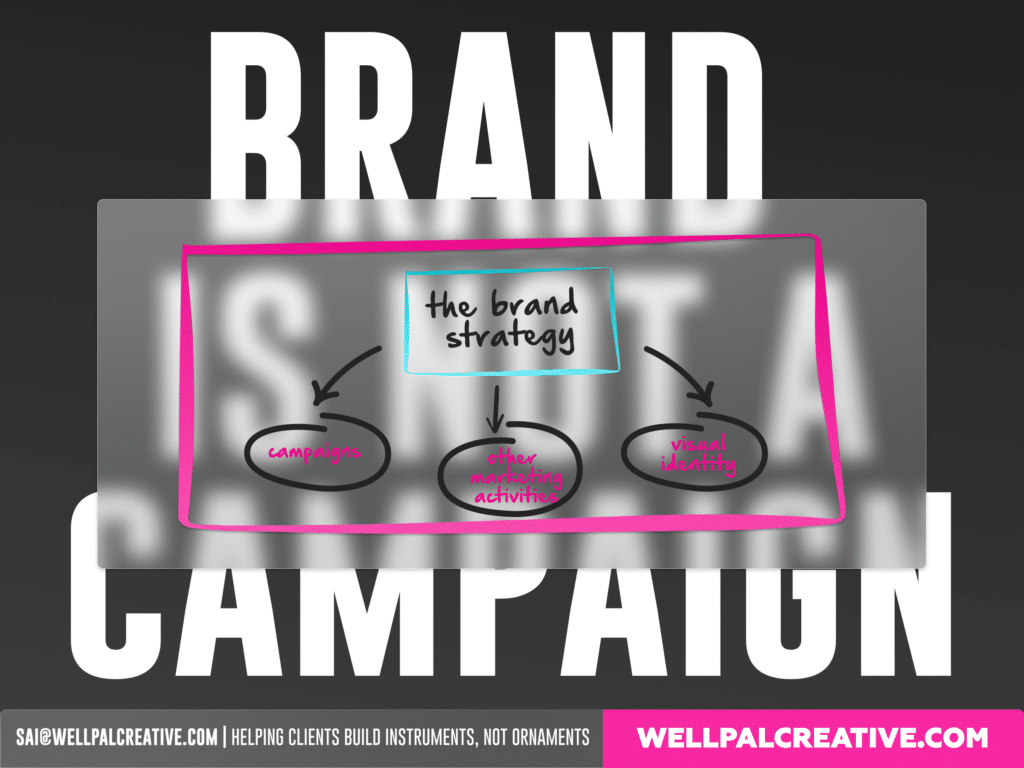
Brand is not a campaign- [LS9]
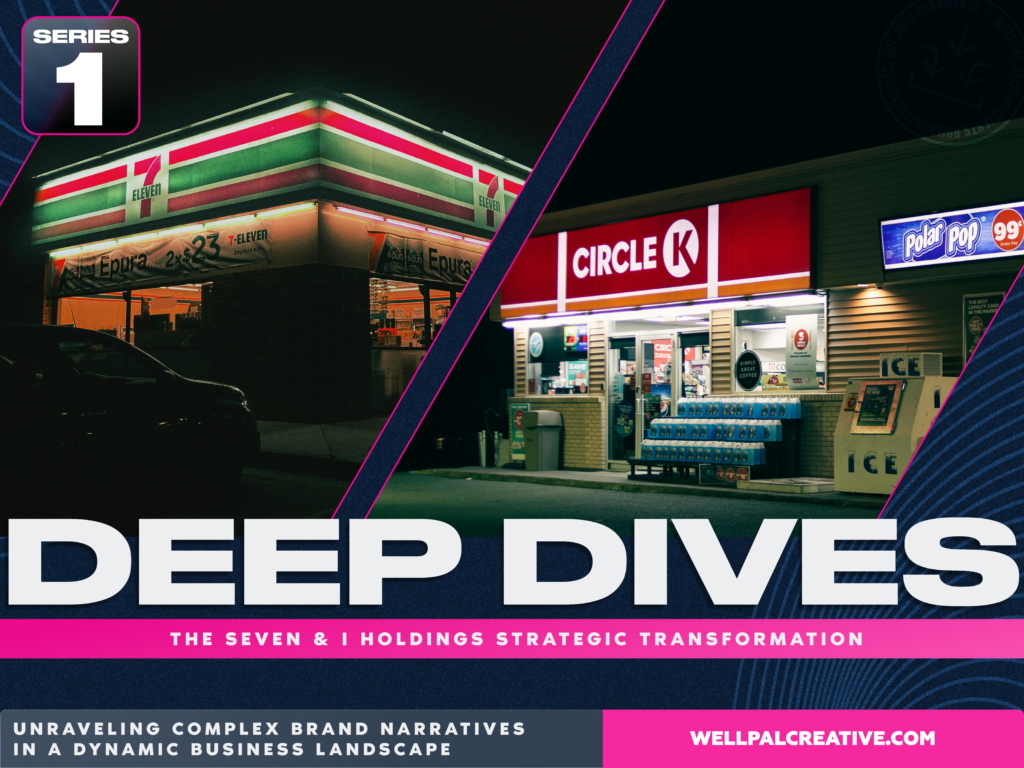
The Seven & i Holdings Strategic Transformation (DEEP DIVE)

How to understand Brand DNA: LEGO and Benetton Case – [LS15]
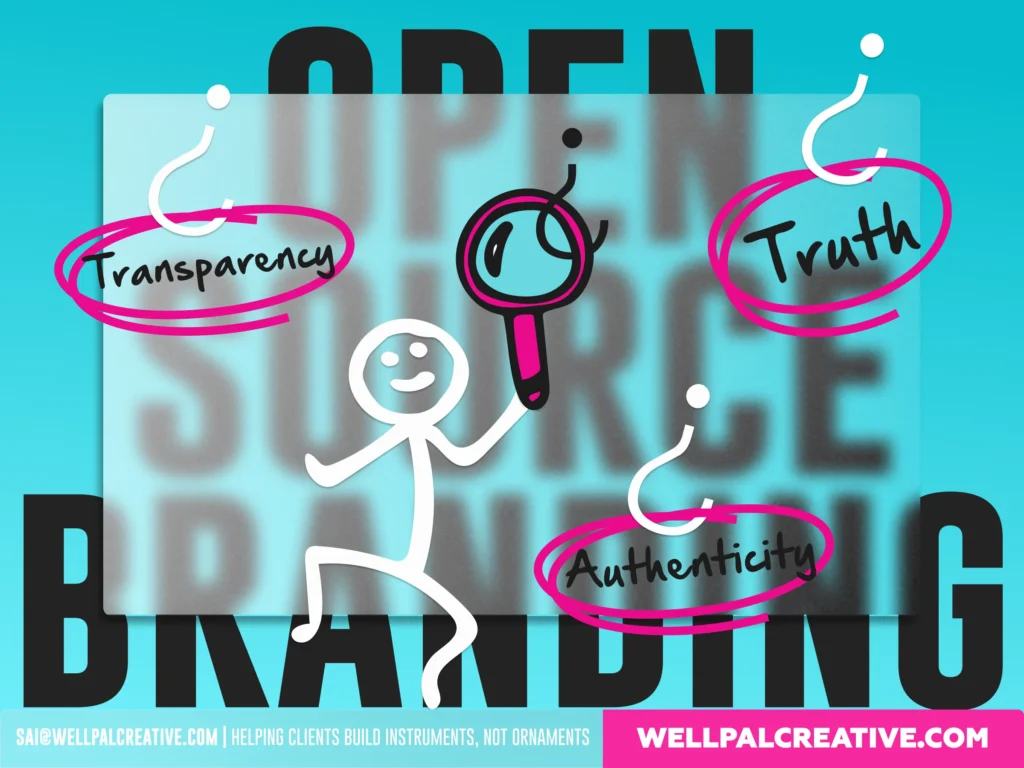
How to leverage open source for brand building – [LS14]

Blow up the silo – [LS13]
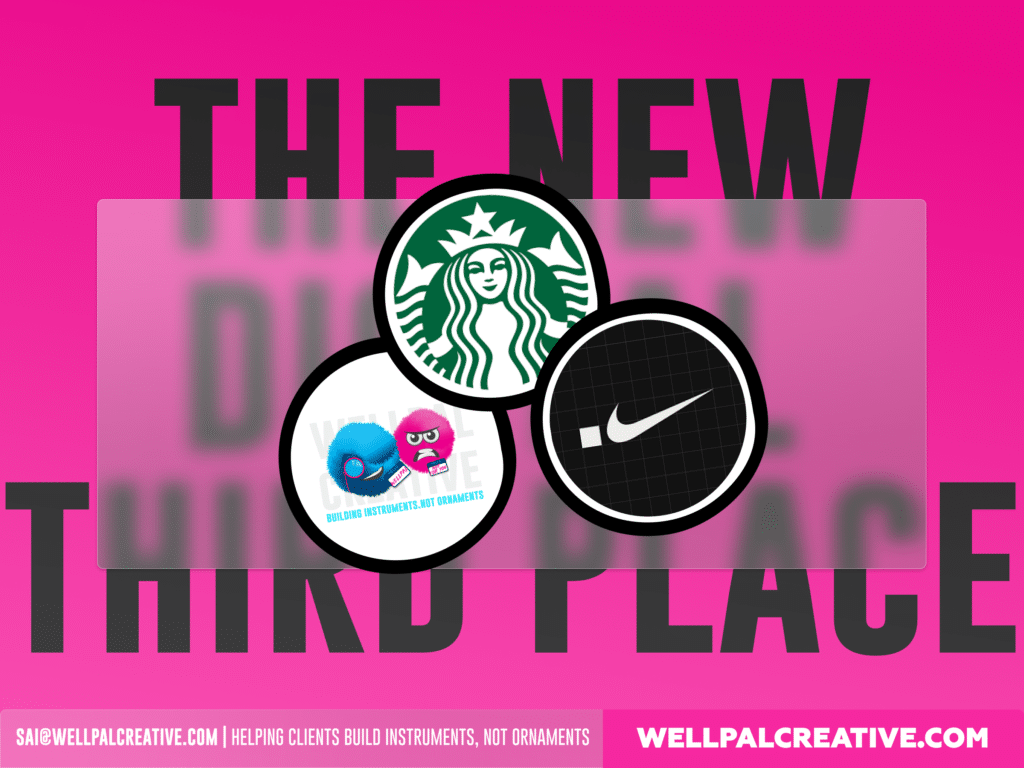
The digital 3rd place- [LS11]
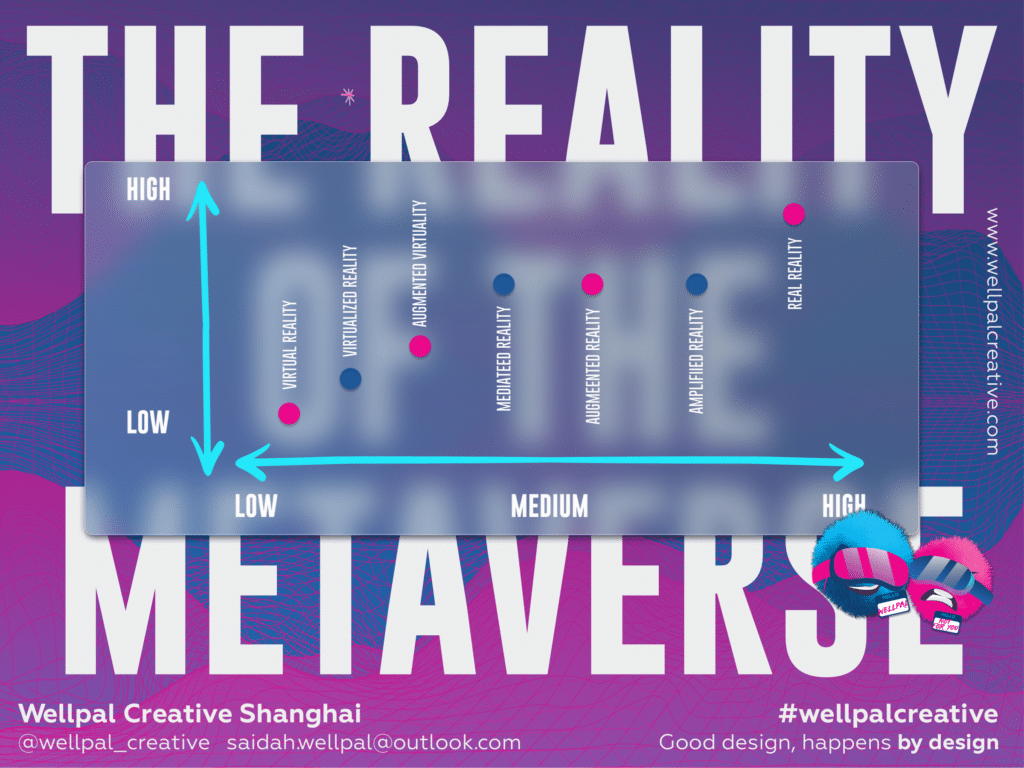
What’s the reality of it? – [LS8]
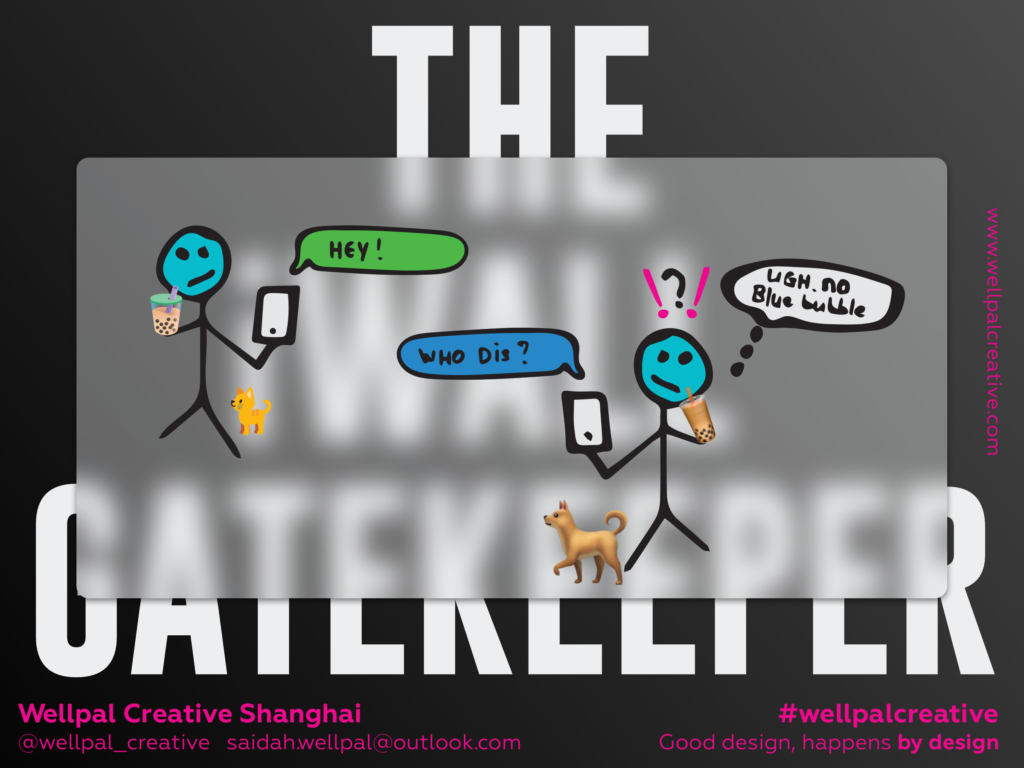
The Great iWall – [LS7]
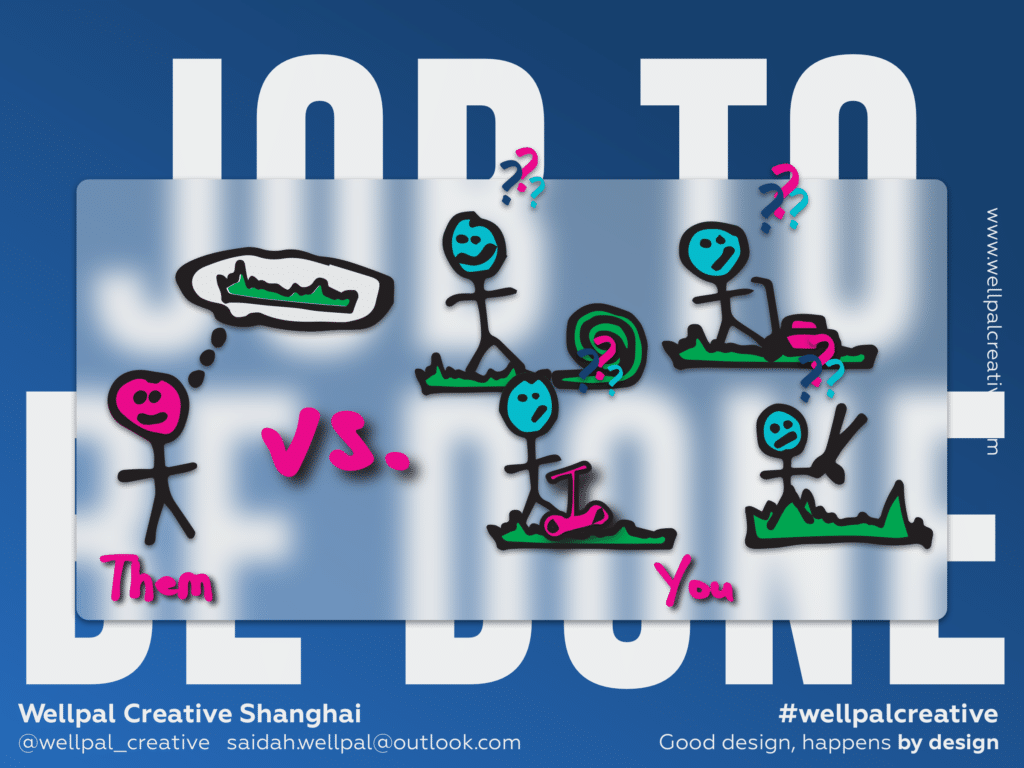
Why you should care that they don’t need a lawnmower [LS6]

Why you should care about what shapes your brand [LS5]

Idea Legos- [LS4]

Into the Ether – [LS3]







